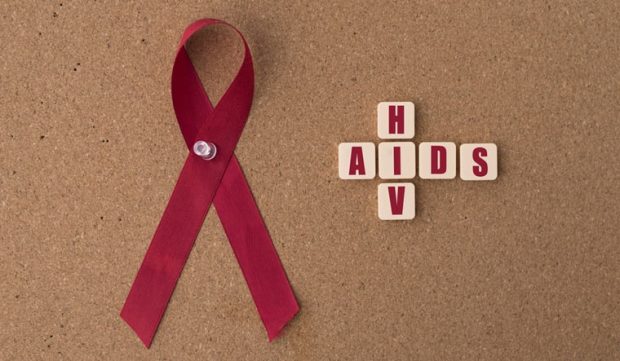
Long-acting injectable PrEP is a big step forward in HIV prevention
PTI, Dec 19, 2022, 12:22 PM IST

Representative Image (Source: Twitter)
Toronto: One year ago, the United States approved a new injectable drug that prevents HIV.
After successful clinical trials, long-acting cabotegravir was found to be almost 100 percent effective at preventing HIV. It was approved in the U.S. on Dec. 20, 2021, for use as HIV pre-exposure prophylaxis (PrEP). This approval means that eligible individuals can now receive this medication every eight weeks to prevent sexually-acquired HIV infection.
However, this new drug, which would help address some of the ongoing challenges with HIV prevention for those who remain at high risk, is still not available in Canada.
HIV in Canada
The number of new HIV infections has not changed much over the past couple of decades and approximately 13 percent of people living with HIV in Canada are undiagnosed. This demonstrates the need for more HIV prevention strategies.
While long-acting injectable PrEP is new, oral PrEP — a pill taken either daily or around sexual activity — was approved in the U.S. back in 2012. Canada only approved oral PrEP in 2016. And we are once again falling behind the U.S. on making injectable PrEP available here.
Oral PrEP already reduces the risk of HIV by almost 100 percent when taken consistently, but recent clinical trials show that injectable PrEP is even more effective. The main advantage of injectable PrEP is that going for injections every two months is a lot easier to remember than taking pills every day, or taking pills before and after sexual activity. The switch from oral pills to injectable shots means that individuals can more easily maintain adherence, which impacts the overall effectiveness of PrEP as HIV prevention.
Although some people might prefer pills to shots for various reasons, injectable PrEP provides another option, and people like having different HIV prevention options available to them. At the individual level, injectables mean more choices. At the population level, more choices mean more prevention because different people might be willing to use different kinds of PrEP to suit their needs.
Contraception research has also demonstrated the importance of expanding people’s medication options. Injectable contraceptives highlight how this technology improves both sexual and reproductive health.
Oral PrEP is often compared with the birth control pill. There is a need to better understand how new injectable options for both contraception and HIV prevention affect adherence, access, and the relationships of those who use them.
Both injectable and oral PrEP are safe and highly effective and they each have very few side effects. Injectable PrEP has mild injection site reactions, including swelling, redness, and pain.
There are also several other new HIV PrEP options that are still being studied in clinical trials, including exciting long-acting oral, injectable, implantable, and infusion options that are administered at different time intervals and could fit the different schedules and preferences of people interested in HIV prevention.
Preparing for prevention
We can be ready for these new developments by learning from our past experiences with the approval and implementation of previous HIV prevention strategies, like oral PrEP. Some individuals and communities still face barriers to PrEP, like access to healthcare providers who are knowledgeable about it, and these barriers can perpetuate health inequalities.
Our research project, The Future of PrEP is Now, focuses specifically on community readiness for long-acting injectable PrEP because it has the potential to help overcome previous barriers to PrEP. Oral PrEP can still be inaccessible, expensive, and stigmatized for many people in Canada and the one-pill-a-day adherence can be especially challenging.
Communities of Two-Spirit, gay, bisexual, queer, and other men who have sex with men (2SGBQM) are still disproportionately affected by HIV, and HIV rates are not declining in Canada. 2SGBQM are also under-reached by existing PrEP programs, especially those who are Indigenous, Black, people of colour, rural, people who use substances, transgender, and non-binary.
In our research, we talk to members of under-reached communities of 2SGBQM as well as the healthcare providers who serve them to:
- learn their preferences regarding future long-acting injectable PrEP options
- assess the feasibility of various models of delivering injectable PrEP
- design a national study of injectable PrEP that responds to the needs and priorities of individuals already experiencing barriers to oral PrEP.
In a recent public webinar, we asked “where are we going?” with PrEP as we plan for a long-acting injectable option to become available in Canada in the near future. We want to ensure that when this new treatment is approved, long-acting PrEP is quickly available and as equally accessible as oral PrEP to those who will benefit from it the most. Raising awareness and building support for this new HIV prevention strategy will help meet those goals.
Written by
Michael Montess, Postdoctoral Associate, Rotman Institute of Philosophy, Western University
Darrell Tan, Clinician-Scientist, St. Michael’s Hospital; Associate Professor, Faculty of Medicine, University of Toronto
Nathan John Lachowsky, Associate Professor, Public Health & Social Policy; Special Advisor Health Research, Office of the Vice-President Research and Innovation, University of Victoria
(The Conversation)
Udayavani is now on Telegram. Click here to join our channel and stay updated with the latest news.
Top News
Related Articles More

Include 4 hrs of physical activity, 8 hrs sleep in routine for optimal health, suggests study

Traffic noise can increase risk of cardiovascular disease: Study

Nearsightedness is at epidemic levels – and the problem begins in childhood

Study finds genetic basis for link between depression, heart disease

World Malaria Day: WHO calls for equitable health access
MUST WATCH
Latest Additions

China lifts restrictions, gives all clear nod for Tesla cars as Musk lobbies hard in surprise visit to Beijing

Veteran politician S M Krishna hospitalised, undergoing treatment for ‘minor ailment’

Repolling held peacefully at one polling booth in Chamarajanagar LS segment in Karnataka

Court convicts four accused, acquits 10 in 2015 Malvani hooch tragedy

ICG apprehends Indian fishing boat with 173 kg of narcotics; two crew members detained

























